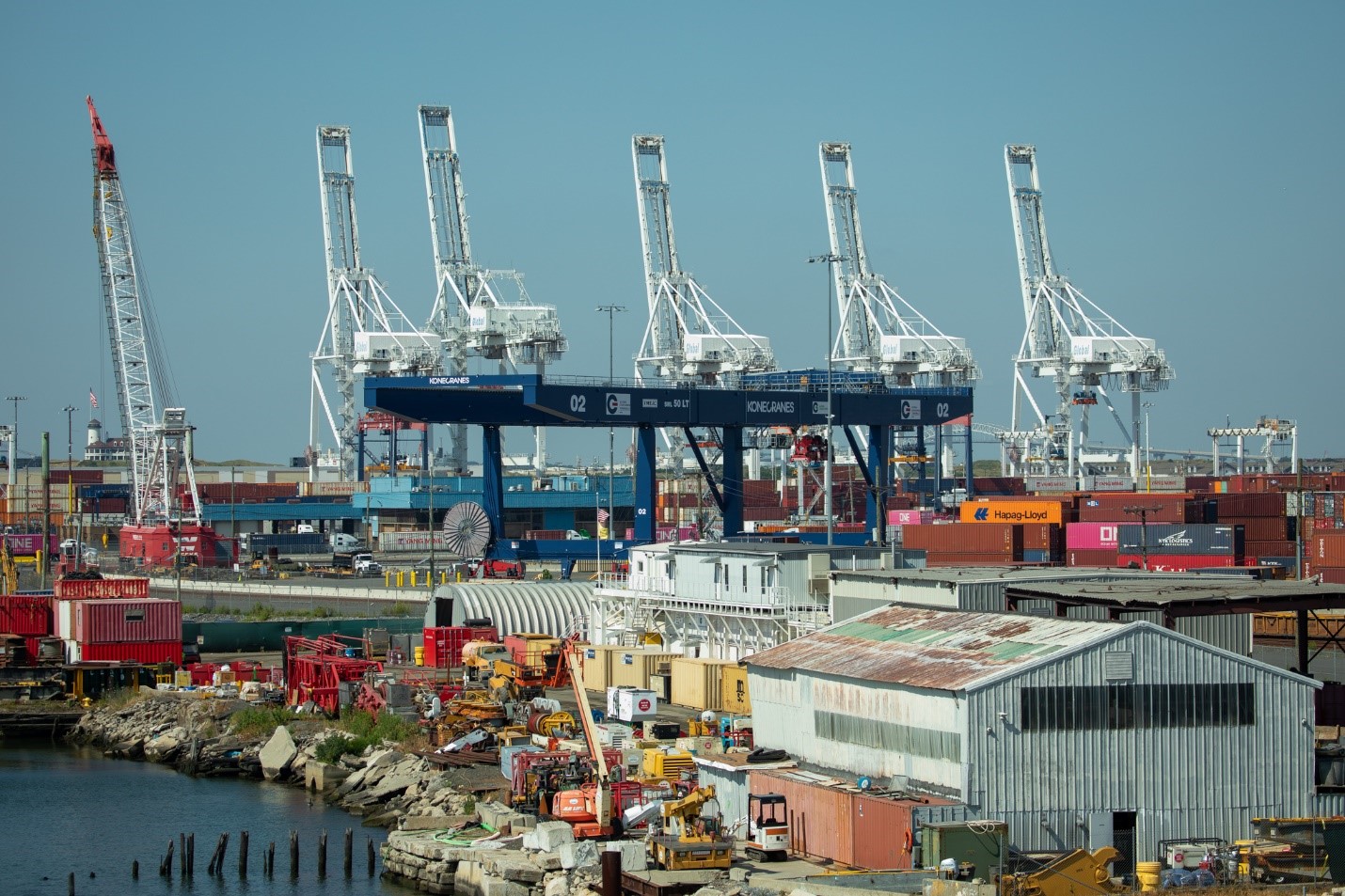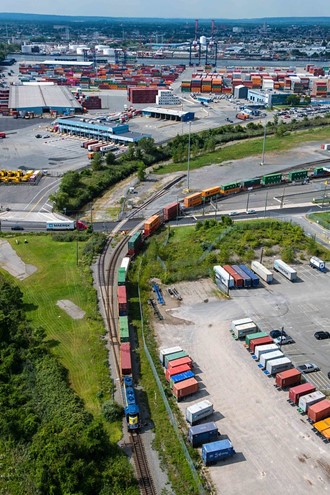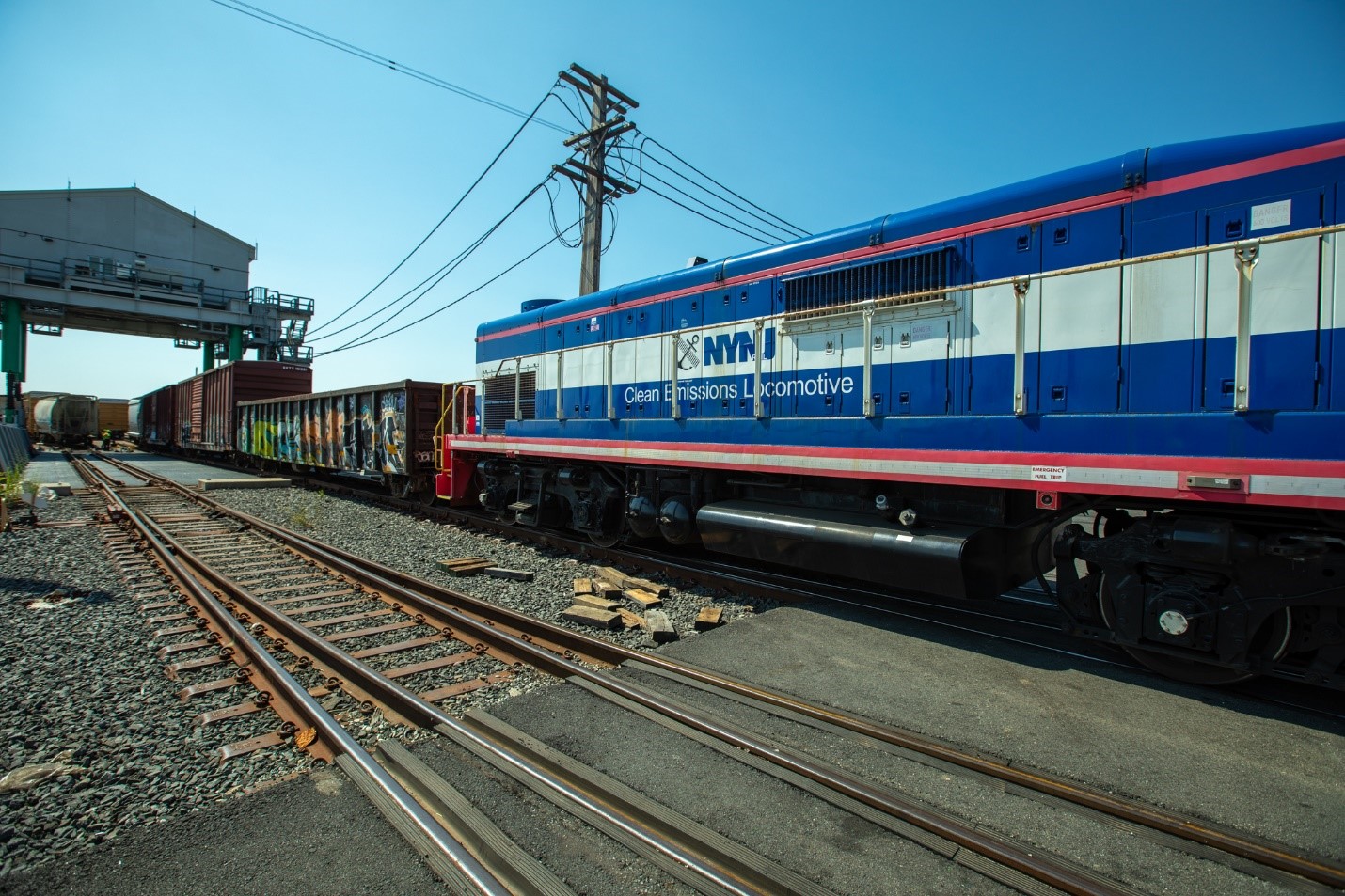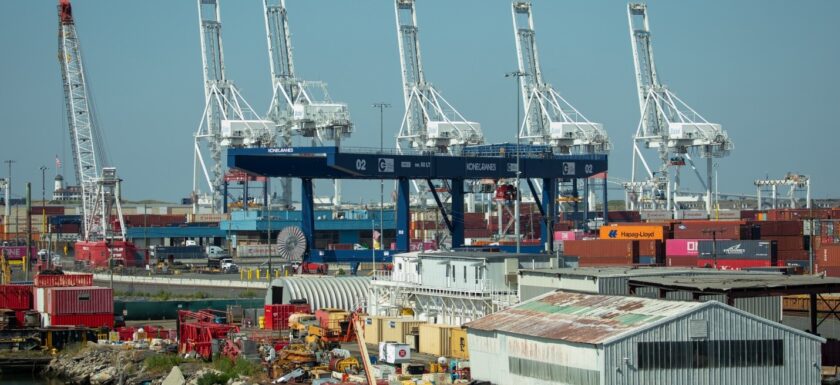It wouldn’t be the first time the Port of New York and New Jersey changed the game.
67 years after Malcolm McLean loaded the world’s first shipping container onto the deck of a converted tanker at Port Newark, the East Coast’s busiest gateway is getting ready for another profound shift: leading the way in the transition to clean energy and net-zero emissions in the shipping industry.
The Port Authority of New York and New Jersey’s wide-ranging Net Zero Roadmap outlines several concrete steps to reduce greenhouse gas emissions at the New York/New Jersey seaport as part of the agency’s overall commitment to reach net-zero carbon emissions by 2050. The commitment encompasses not just the authority’s direct emissions, but also emissions produced by its operating partners – in this case, the wide world of marine terminal operators, oceangoing vessel operators, railroads, and trucking companies.

Already, 89 of the port’s 91 ship-to-shore and rail-mounted gantry cranes are electric, with a mandate for full electrification by 2026. Through an ambitious marine terminal tariff, the agency is phasing out old equipment and requiring terminal operators to move to zero-emission material handling equipment as new models become commercially available.
While electric drayage trucks are not yet widely deployed in the region, the Port Authority is helping companies move toward newer, cleaner models through its Truck Replacement Program. The program provides up to $25,000 to truck owners ready to replace their old truck for a newer truck. So far, it has helped fund the replacement of more than 900 outdated trucks with cleaner models. The roadmap outlines further potential steps to grow alternative fuel infrastructure, as the agency works to ease the transition for trucking companies switching to battery electric trucks through the installation of new charging equipment.
On the water, the industry is in the early stages of transitioning to low- and zero-emission marine fuels. In the interim, the agency’s Clean Vessel Incentive program encourages fuel conservation and voluntary moves to curb engine emissions . That includes a Vessel Speed Reduction component, rewarding ships that travel slower and burn less fuel through the region. Additional financial incentives are available for ships calling at the port that meet new engine standards or use alternative fuels such as LNG or methanol. In 2021, the program took more than 25,000 metric tons of CO2 emissions out of the air, which is equivalent to taking more than 5,000 cars off the road.

The Port Authority is also looking to maximize usage of its on-dock ExpressRail system, which connects every major container terminal in the marine complex with two Class I railroad partners, CSX and Norfolk Southern. The rail system reaches into the U.S. Midwest, New England, and eastern Canada, allowing goods to reach major distribution hubs such as Chicago in under 48 hours. The port’s ongoing Southbound Connector project will further expand the system’s capacity while offering more operational flexibility for shippers looking to get goods in and out of the port through a more sustainable mode of transport.
Even more rail options are available to shippers throughout the complex. The port manages New York New Jersey Rail LLC, a cross-harbor barge integrated into the national rail network. The Short Line Marine Railroad operates between Brooklyn and New Jersey, providing the only remaining carfloat service on the New York Harbor while also offering warehouse switching services at Port Jersey. It utilizes three low-emission diesel locomotives to load the carfloat for the 45-minute trip across the harbor.
Nothing at the seaport happens without coordination and collaboration, and that is especially true for this monumental shift. The port already finds itself a step ahead thanks to the innovative Council on Port Performance, which gathers partners across the supply chain for regular meetings, touching on measures that can optimize efficiency and reliability across a wide range of port operations.

Thanks to the port’s powerful perch as the busiest cargo gateway on the U.S. East Coast, these sustainability initiatives have the potential to resonate beyond the New York-New Jersey area to manufacturers, shipping lines, and other seaports around the world.
“We’re ready to work with every link in the supply chain to help us navigate this uncharted territory,” said Bethann Rooney, port director at the Port Authority of New York and New Jersey. “By moving in this direction, we hope we can lead the way for the shipping industry as a whole to move toward cleaner operations.”

